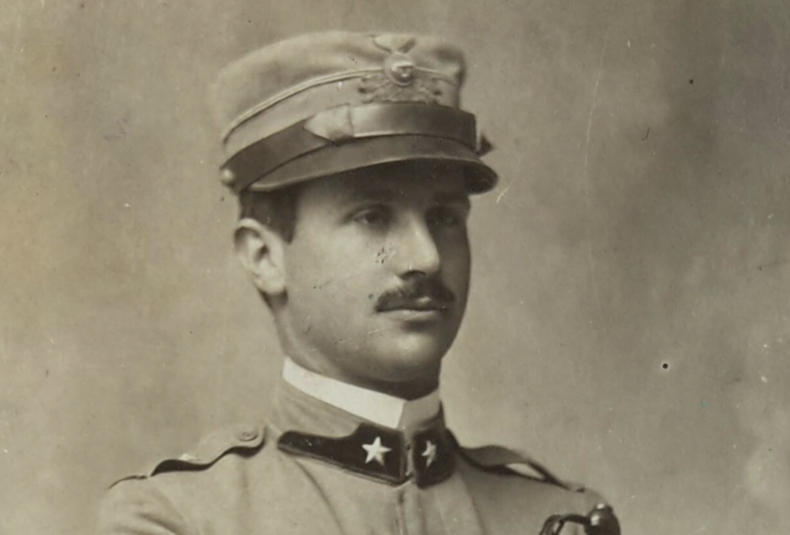Giuseppe Castruccio, a consul among the “Righteous”

Giuseppe Castruccio was good at playing football. He was so good that he earned a place among the regular players of Genoa, the team that dominated the football scene in Italy at the beginning of the 20th century, winning several titles in a row. But his best was yet to arrive: some years later, after successfully embarking on his diplomatic career, he found himself working in Thessaloniki, that had become hell on earth for the tens of thousands of Jews living there.
In the role of Consul General of Italy, the former promising footballer, who had since become a heroic man of the institutions, did his utmost to save individuals and families in danger. In particular, he did all he could to ensure that the Italian Jews living in the area occupied by Rome’s military forces were not moved to the German side and from there to the death camps, and that those in the German side returned to the Italian-occupied area. Among other things, he is credited with rescuing 281 Jews from the “Baron Hirsch” ghetto with a high-risk plan: disguised as Italian soldiers, they were put on trains to Athens and Larissa.
Thanks to all these acts his name was registered in the “Righteous Among the Nations” honoured by Yad Vashem, the solemn homage of the State of Israel to those who did not show indifference and took action risking their lives. “The example of the Righteous is a candle that sheds light and leads the way. May Castruccio’s actions be a compass to guide us between good and evil. May his moral legacy guide and encourage us to make a difference, to be courageous enough to feel compassion for those who need our help”, this is the reflection of the ambassador of Israel to Italy Alon Bar during the recent award ceremony at the Farnesina, the headquarters of the Ministry of Foreign Affairs.
This ceremony is the most representative moment to commemorate an ethical choice already pointed out in the past by the exhibition “Solo il dovere oltre il dovere exhibition. Italian diplomacy facing the persecution of the Jewish people, 1938-1943”. This exhibition was set up thanks to a collaboration between the NPO Fondazione Museo della Shoah in Rome and the Farnesina itself. Among the speakers were the President of the Union of Italian Jewish Communities Noemi Di Segni, the President of the Fondazione Museo della Shoah Mario Venezia, the President of the Roman Jewish Community Ruth Dureghello, and the ambassador Pasquale Terracciano. Also, Alessandro Punas, one of the diplomat’s grandchildren, was present, and said: “My grandfather was a multifaceted man, and we are proud of him. It is important that this acknowledgment goes not only to him as a person, but also as a servant of the State.”
The ceremony also featured a video testimony given by Ray Naar, one of the Thessaloniki Jews saved by Castruccio.
Translated by Martina Bandini, revised by Annadora Zuanel, students at the Secondary School of Modern Languages for Interpreters and Translators of the University of Trieste, interns at the newspaper office of the Union of the Italian Jewish Communities – Pagine Ebraiche.
